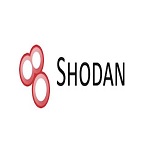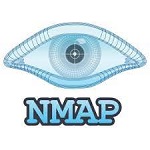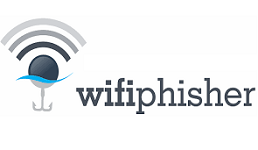Top Offensive Cybersecurity Engineering Tools
An Offensive Cybersecurity Engineer is a security professional with an in-depth understanding of the penetration testing process and is efficiently working within the offensive security team. His day-to-day responsibilities include identifying flaws in the complex and extensive IT infrastructure. He hacks the system using offensive security skills and offers contributions in technical operations, engineering, and architecture of the secure platforms. An offensive security engineer also expertise in reviewing the source code, web applications, network security architecture, and finding solutions to mitigate potential cybersecurity threats. To carry out his duties efficiently, he must be well-versed with some of the automated security tools. These high-performing automated tools work efficiently and save precious time. Here is a list of powerful offensive security tools that go hand-in-hand for Offensive Cyber Security Engineers:

Shodan :  Shodan is a powerful search engine. It is used by offensive cybersecurity teams to detect vulnerable endpoints in the network. Other search engines, such as Google, indexes the web content on the internet, but Shodan can also detect IoT devices. Shodan is a search engine used to detect everything connected to the internet, such as webcams, home security systems, servers, traffic lights, etc. Shodan also comes up with a command-line interface (CLI) that is packaged with the python library. This interface is more efficient than the original website of Shodan. Penetration testing teams use the Shodan CLI to identify vulnerable devices in the network.
Shodan is a powerful search engine. It is used by offensive cybersecurity teams to detect vulnerable endpoints in the network. Other search engines, such as Google, indexes the web content on the internet, but Shodan can also detect IoT devices. Shodan is a search engine used to detect everything connected to the internet, such as webcams, home security systems, servers, traffic lights, etc. Shodan also comes up with a command-line interface (CLI) that is packaged with the python library. This interface is more efficient than the original website of Shodan. Penetration testing teams use the Shodan CLI to identify vulnerable devices in the network.
Advantages:
- Used for detecting vulnerabilities in the network and systems
- Shodan API (Application Programming Interface) enables security teams to automate their security operations
- Easy integration with other tools such as Maltego and web browser plugins
Wireshark :  Wireshark is an essential and free tool used as a network protocol analyzer. It provides security professionals with minute details of network traffic. This tool captures the data packets in real-time and can find out their origin and destination. It is used for troubleshooting issues, including the dropped packets, latency issues, and malicious activity on a network.
Wireshark is an essential and free tool used as a network protocol analyzer. It provides security professionals with minute details of network traffic. This tool captures the data packets in real-time and can find out their origin and destination. It is used for troubleshooting issues, including the dropped packets, latency issues, and malicious activity on a network.
Advantages:
- Offers live packet capture and offline analysis of the data packets
- Facilitates the investigation of the smallest detail of the network
- Supports all of the major internet protocols
- Available in CLI (Command-line interface) and GUI (Graphical User Interface) versions
Supported platforms: Linux, Windows, macOS, and Solaris.
Maltego : Maltego is an open-sourced intelligence gathering tool (OSINT) to analyze information online. Gathering information with the help of manual techniques is a time-consuming task. Maltego saves the time of the offensive security team as it automates the process. It represents the collected data in an easy-to-understand entity-relationship model.
Maltego is an open-sourced intelligence gathering tool (OSINT) to analyze information online. Gathering information with the help of manual techniques is a time-consuming task. Maltego saves the time of the offensive security team as it automates the process. It represents the collected data in an easy-to-understand entity-relationship model.
Advantages:
- Automates the information gathering process
- Easy analysis of the data through graphical representation
- Enables offensive security teams to work more efficiently and smartly
Supported platforms: Linux, Windows, and macOS.
Hydra: Hydra is a password cracking tool. It uses Brute force attack methods for getting the different username and password combinations. Hydra is used along with the programs such as ‘crunch’ and ‘cupp’, which can generate a wordlist. These wordlists are used by Hydra to guess the login credentials. It can perform attacks against various protocols, including HTTP, IMAP, HTTPS, SSH, SMB, FTP, RDP, and Telnet.
Hydra is a password cracking tool. It uses Brute force attack methods for getting the different username and password combinations. Hydra is used along with the programs such as ‘crunch’ and ‘cupp’, which can generate a wordlist. These wordlists are used by Hydra to guess the login credentials. It can perform attacks against various protocols, including HTTP, IMAP, HTTPS, SSH, SMB, FTP, RDP, and Telnet.
Advantages:
- Flexible and highly efficient password cracker
- Supports a wide range of services and protocols to attack
- Facilitates the addition of new attacking modules easily
Supported platforms: Linux, Windows, macOS, and Solaris.
Metasploit : Metasploit is a widely used tool in the cybersecurity world. It helps security professionals to find out vulnerabilities, carry out security assessments, and in making defense strategies. The Metasploit framework has a large database of exploits to get an offensive cybersecurity team to break into the target systems.
Metasploit is a widely used tool in the cybersecurity world. It helps security professionals to find out vulnerabilities, carry out security assessments, and in making defense strategies. The Metasploit framework has a large database of exploits to get an offensive cybersecurity team to break into the target systems.
Advantages:
- Offers a friendly Graphical User Interface (GUI)
- Open-source
- Efficient for testing large networks
- Provides Easy and smart payload generation
- Keeps the target system stable after compromising it
Supported platforms: Linux, Windows, and macOS.
Nmap : Nmap (Network mapper) is an open-source network scanning tool used to scan ports and explore networks for vulnerable services. Nmap is a useful tool for gathering information to detect open ports, applications, operating systems, and versions used by the target machine. It is available in the Graphical User Interface (GUI) and command-line interface (CLI) versions.
Nmap (Network mapper) is an open-source network scanning tool used to scan ports and explore networks for vulnerable services. Nmap is a useful tool for gathering information to detect open ports, applications, operating systems, and versions used by the target machine. It is available in the Graphical User Interface (GUI) and command-line interface (CLI) versions.
Advantages of Nmap:
- Identify devices on the network
- Detect the type of operating systems and services running on a network
- In-built scripts for vulnerability assessment
- Used for network auditing
Supported platforms: Windows, OpenBSD, NetBSD, Solaris, Amiga, Sun OS, Linux, macOS, and FreeBSD.
Cherrytree : Cherrytree is a free and open-source application used for taking hierarchical notes. It stores text, files, images, tables, and executable code in a single XML or SQLite file. Cherrytree application is used by the penetration testers to prepare the assessment report after performing the penetration tests.
Cherrytree is a free and open-source application used for taking hierarchical notes. It stores text, files, images, tables, and executable code in a single XML or SQLite file. Cherrytree application is used by the penetration testers to prepare the assessment report after performing the penetration tests.
Advantages:
- Features rich text formatting, syntax highlighting, advanced search options, keyboard shortcuts, embedded file handling, inter-application copy/paste, and many more.
- The Cherrytree syncs with the cloud services, exports notes to HTML and provides password protection to secure the notes.
Supported platform: Linux and Windows.
Gophish: Gophish is a tool used by offensive cybersecurity teams to run a phishing campaign to check the awareness of their employees. This tool proactively monitors every email sent to the target organization and provides information such as email opens, link clicks, and login credentials submitted by the employees.
Gophish is a tool used by offensive cybersecurity teams to run a phishing campaign to check the awareness of their employees. This tool proactively monitors every email sent to the target organization and provides information such as email opens, link clicks, and login credentials submitted by the employees.
Advantages:
- Open-source tool
- Provides flexibility to automate phishing campaigns
- Interactive user interface
Supported platforms: Linux, Windows, and macOS.
Owasp ZAP : ZAP stands for Zed Attack Proxy. It is a free and open-source tool developed by OWASP (open web application security project). It is one of the powerful tools to scan vulnerabilities in web applications or websites. OWASP ZAP creates a proxy server. Your site data passes through it and is filtered by a scanner that detects vulnerabilities in websites.
ZAP stands for Zed Attack Proxy. It is a free and open-source tool developed by OWASP (open web application security project). It is one of the powerful tools to scan vulnerabilities in web applications or websites. OWASP ZAP creates a proxy server. Your site data passes through it and is filtered by a scanner that detects vulnerabilities in websites.
Advantages:
- In-built fuzzing payload lists to choose a wide range of fuzzing payload
- Highly scriptable
- Support for multiple script languages including Python, Groovy, Javascript, Zest, and Ruby
- Flexible scan management policy to aid offensive cybersecurity teams
Supported platforms: Linux, Windows, and macOS.
Burpsuite: Burpsuite comes with a set of tools used to examine the security of web-based applications. It is developed by a company named portswigger. It is a renowned tool among web application pen testers and bug bounty hunters. Burpsuite can perform different tests, including mapping the application’s attack surface, analyzing requests and responses occurring between browser and servers.
Burpsuite comes with a set of tools used to examine the security of web-based applications. It is developed by a company named portswigger. It is a renowned tool among web application pen testers and bug bounty hunters. Burpsuite can perform different tests, including mapping the application’s attack surface, analyzing requests and responses occurring between browser and servers.
Advantages:
- Allows you to perform manual and automated scanning of web application
- All of its tools and features work together to give accurate data
- Spidering feature that helps to scan the web application and gives you the information in a flow chart
- Serves as a reliable proxy server
Supported platforms: Linux, Windows, and macOS.
Mimikatz : Mimikatz is an open-source tool used for getting the credentials and escalating privileges in windows-based target machines. Mimikatz targets a functionality of windows called Single Sign-On (SSO). Earlier, windows had a feature WDigest to load the passwords and decryption key to the memory. Mimikatz used to exploit this feature to fetch out credentials. The WDigest feature is disabled by windows, but it still exists. It also uses various other methods to obtain credentials such as pass-the-hash, pass-the-ticket, golden-kerberos-tickets, and pass-the-cache.
Mimikatz is an open-source tool used for getting the credentials and escalating privileges in windows-based target machines. Mimikatz targets a functionality of windows called Single Sign-On (SSO). Earlier, windows had a feature WDigest to load the passwords and decryption key to the memory. Mimikatz used to exploit this feature to fetch out credentials. The WDigest feature is disabled by windows, but it still exists. It also uses various other methods to obtain credentials such as pass-the-hash, pass-the-ticket, golden-kerberos-tickets, and pass-the-cache.
Advantages:
- One of the widely used password-stealing platform
- Open-source and free
- Includes most up-to-date attacks for the recent versions of Windows
- Used to detect vulnerabilities in Windows authenticated system
Supported platforms: Linux and Windows.
NetworkMiner : NetworkMiner is a network forensic analysis tool that can perform advanced network analysis and detect operating systems, open ports, and hostnames in a network. With the help of NetworkMiner, the Network Administrator and other offensive security team members can parse the PCAP files and carry out offline analysis.
NetworkMiner is a network forensic analysis tool that can perform advanced network analysis and detect operating systems, open ports, and hostnames in a network. With the help of NetworkMiner, the Network Administrator and other offensive security team members can parse the PCAP files and carry out offline analysis.
Advantages:
- Easy advanced network traffic analysis
- Interactive user interface
- Focuses more on hosts and their attributes instead of the raw data packets
Supported platforms: Linux, Windows, macOS, and FreeBSD.
Wifiphisher : Wifiphisher is a tool that facilitates offensive security teams to test Wi-Fi security. Wifiphisher performs phishing attacks against the client connected to the wireless network. It enables an attacker to get the man in the middle position against wireless clients. With its help, stealing credentials from captive portals, third-party login pages, or WPA/WPA2 preshared keys becomes easy.
Wifiphisher is a tool that facilitates offensive security teams to test Wi-Fi security. Wifiphisher performs phishing attacks against the client connected to the wireless network. It enables an attacker to get the man in the middle position against wireless clients. With its help, stealing credentials from captive portals, third-party login pages, or WPA/WPA2 preshared keys becomes easy.
Advantages:
- Easier to use and provides more flexibility
- Supported by a large community of developers and users
- Functionality can be extended by simple and complicated modules in Python
Supported platforms: Linux.
Atomic Red Team: Atomic Red Team is a tool used by security teams to test their controls. With the help of this tool, security professionals can perform tests that are based on the techniques used by attackers. All these techniques and tactics are mapped as per the MITRE ATT&CK framework.
Atomic Red Team is a tool used by security teams to test their controls. With the help of this tool, security professionals can perform tests that are based on the techniques used by attackers. All these techniques and tactics are mapped as per the MITRE ATT&CK framework.
Advantages:
- Allows defenders to quickly test their defenses against the sophisticated cyberattacks
- Tests are mapped with MITRE ATT&CK framework
Supported platforms: Linux and Windows.
Offensive Cybersecurity Engineer Training with Infosec Train
Infosec Train offers a comprehensive training program for aspiring Offensive Cybersecurity Engineers to hone their penetration testing and exploit development skills. The participants will learn the most up-to-date tools, techniques, and methodologies to evade the modern-day security infrastructure. The training course will cover the domains of CEH V11, Advanced Penetration Testing (APT), MITRE ATT&CK Training, Exploit Development Basics, and ISO 27001 fundamentals altogether in a single training program.
Check out the latest schedule of the OCSE training program here: https://www.infosectrain.com/courses/offensive-cyber-security-engineer-training






 1800-843-7890 (India)
1800-843-7890 (India)